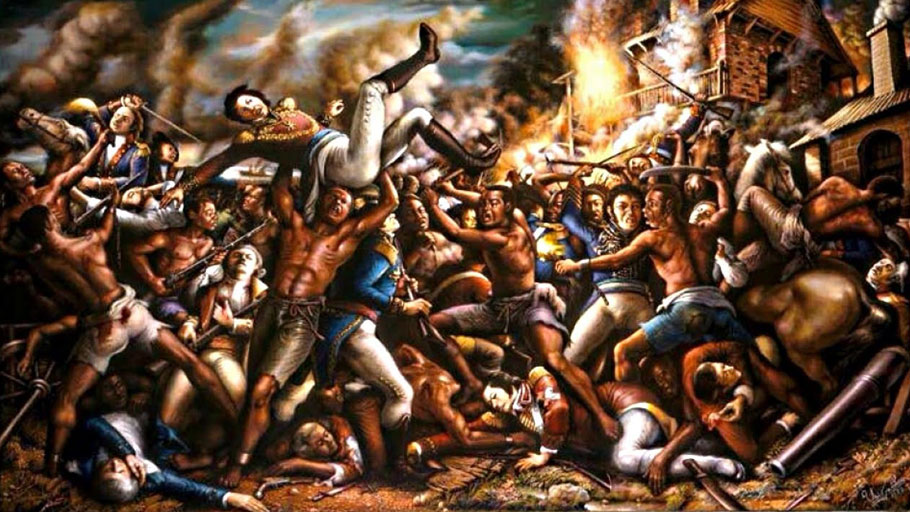By Dòwòti Désir —
The Haitian Revolution is the blue print for nation building that has been redlined out of history as written by the West and the global North. Furthermore, the selective recollection of facts by various sources, has been problematic because critical aspects of this momentous historic event, specifically its genesis at the Congress and Ceremony Bwa Kayiman, its military, spiritual and ethical cornerstone has been tainted. The convening of some 200 Africans (often referred to as a conspiracy) was as much a political convocation, as it was a religious ceremony. It was as much a spiritual expedition as a reconnaissance mission to organize and execute a war.
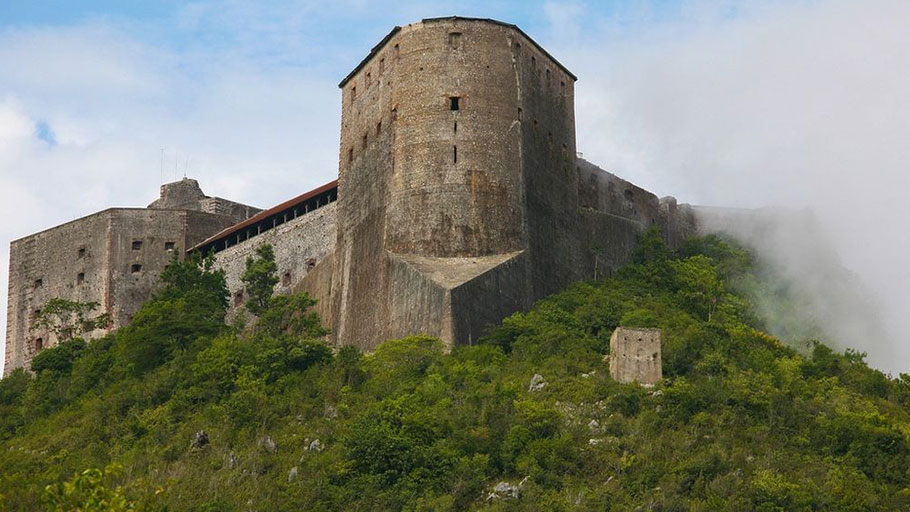
Fig. 1 — La Citadel Laferrière, the iconic figure of Haitian ingenuity and revolutionary courage. Photo-credit: A. Proimos
Divine Insurgency
Central to our understanding of the merits of the Haitian Revolution is its religious foundation. The importance of Haitian Vodou as a theological construct has been vilified, dismissed and/or demonized leaving our collective sense of history distorted, void of its moral and spiritual center, and incomplete. [ 1 ] The objective of this presentation is to commemorate the Congress and Ceremony of Bwa Kayiman (Bois Caimen) of 14 August 1791 in the former colony of Saint Dominguez now, the Republic of Haiti. I shall informally examine Bwa Kayiman through the lens of Bantu Kongo principles, and highlight the role of Vodou in unifying the Africans of that era. As I speak to the role of women in the Haitian Revolution, a brief commentary on the impact of this phenomenon of history on more current human rights thought shall be offered at its conclusion. Remembering these Africans with a minimum of arms fought against the well-equipped French royalist troops, British expeditionary forces and later Napoleon’s army. Guerilla warfare was employed: masquerading the landscape with traps, use of biological warfare; and African, as well as, European fighting techniques would lead to a heroic victory. Within the global Afro-Atlantic world there was strife. It was inevitable that a victory would be won to alter the tide of history. Here are some that are notable to provide context:
- 1494 indigenous resistance and genocide comes to ahead on the island that would later be known as Hispaniola
- 1521 Ingenio de Boca de Nigua uprising of 41 Senegambian in Quisqueya Bohio Ayiti
- 1570 Gaspar Yanga in collaboration with other Africans led a revolt in Veracruz, Mexico
- 1603 Benko Biohó a maroon, founded the first free town of Africans in the Americas, the San Basilio de Palenque, in Colombia
- 1605 Uprisings led by Ganga Zumba in Brazil Kilombo dos Palamares
- 1627-1647 Queen Nzinga goes to war against the Dutch and Portuguese Angola
- 1685 The Code Noir is implemented by the French in the Caribbean
- 1698 – 1721 Civil War in the Kingdom of Benin
- 1720 Queen Nanny of Jamaica assumes control of land to establish Nanny Town
- 1718 -1740 Kingdom of Dahomey expanded militarily under King Agadja
- 1721 New York Slave Revolt
- 1733 St. John’s Revolt becomes the longest insurrection in the Caribbean
- 1763 Slave Revolt led by Cuffy in Guyana
- 1768 The Código Negro Emparán infests the Spanish colonies
- 1791 Congress de Bwa Kayiman
Let’s start with understanding what Vodou is: Hailing from West Africa, particularly Dahomey, the Fon word “Vodou” has been defined to mean everything from a “sacred dance to the ancestors,” to the “fierce or impassioned believer of the Most Divine.” I further define Haitian Vodou as an eco-theological philosophy whose ethical principles are the scaffolding of the traditions of liberation theology we as African descendants hold so dearly. In this presentation, the word Lwa (loa) is a reference to the spiritual forces that guide the teachings of the tradition. The Lwas have distinct personalities that both reflect the paths to Bondye (the Good God) and are Her and His tendrils in our lives. Vodou is the philosophical foundation of our global African community, holding each of us responsible to one another in a convenant that binds all of our lives to the lives of those who came before us, and to the vitality of those who are yet to be. Vodou teaches that balance and justice are anchors of upholding community life with the chief community builders being women.
Women Warriors: Fanm Vayon
[ 2 ] Its important to remember approximately 1/3 of the Haitian Army consisted of women. They defended towns and military camps; they tended to fallen soldiers; and counseled (male) leaders in strategic movement both militarily and politically. Our tradition of female combatants has its roots in the Amazon battalions of Dahomey – the “Mino” (meaning, “Our Mothers” in the Fon language.) This is further underscored in the clerical structure of Vodou, in the frequent use of female color guards, and the Petwo female Lwa who are the most feared and ferocious seekers of justice in Vodou. Even the male energies embodied in blacksmithing forged in the lightening and hammered on anvils, concede to female power enshrined by the Kongo principles that infuse Vodou’s sensibilities. African images of the blacksmith is critical to social constructs for infrastructure development, but power was not intended to be hard and fast but also expected to contain a gentle and nurturing side, so that we found furnaces or hearths feminized with breasts in the Kongo households, providing an altogether different take on the notion of “domesticity” with women ready to defend the communities and territories. It is no accident that history has passed two celebrated Kongolese women whose legacies would no doubt influence the presence and role of African women in the Haitian Revolution.
Queen Nzinga (aka Njinga) c. 1583 was legendary for her pose, diplomacy and battle skills in the field. Although Queen Nzinga died in 1663 (fig. 3), this warrior woman was not the only female nation builder of that great land. Beatriz Kimpa Vita (Doña Beatrice) c. 1682 to 1706 (fig. 2) was a prophet whose radical imagination not only reclaimed the space of European Christianity by heading the Antonian Movement, claiming to be permanently possessed by St. Anthony of Padua, but she argued that Jesus, Mary and other saints were not in fact European. Kimpa Vita did not recognize them as what we in modern times would refer to as Mid-Eastern, or for that matter Ethiopian but Kongolese. [ 3 ] The attempts to remove the then sitting King Afonso through with her conspiracy with the contesting King Pedro IV eventually led to Beatriz’ being burned at the stake by Capuchin missionaries yet her movement was used to unify a kingdom that had stayed at war for decades. It is perhaps here the seed for a liberation theology would play itself out in the most profound ways at the Congress and Ceremony Bwa Kayiman. The civil wars that had been shaping the reality of Kongo life spilled its ways into the Caribbean basin right to the fires that marked the events of 1791.
The Fire Next Time
We often talk about the Haitian Revolution with the historical figure (fig. 8) Dutty Boukman and minimize another important leader named Makaya. I start with him not only because of his prominence but [ 4 ] Makaya’s leadership reflects the geopolitical and ideological challenges confronted by Africans of the era and serves as a introductory to the KiKongo ethical framework I referenced. Makaya is a complex figure born in the Kongo and among the very first leaders of the Haitian Revolution. He is often overlooked because he swore an alliance to the King of Spain and that of France. More importantly in the literature, we find that he made it quite evident that he was a “…subject of the King of the Kongo.” We have three kings – the Christian reference is clear (Magi), there are three kingdoms, and three enemies for whom he saw strategic advantages for alignment and recognition. He teaches us: While unwanted, we must be mindful of the need for, however unwanted or distasteful, alliances that speak to the urgency of the moment, “The enemy of my enemy is my friend”. He played ideological factions against each other as needed. A valiant warrior, Makaya was a source of tension for the military genius Toussaint L’Ouverture, even as he (Makaya) won a critical battle to the north of the country that contributed to the ultimate victory leading to independence.
We cannot discuss war without the Lwas of Justice and War, the First Anvil Maker and the Voice of Thunder, Ogun Feray and the Lwa representing the Will to Birth and Protect that Which is Created, Ezuli Dantò: Lwa: are paths of energy manifest in named entities that represent the precincts of power, roads of governance, consolidation of knowledge, and the essence of spirit. It is thorough them we find balance. Dantò is the Patron Lwa of Haiti, the Queen Mother Warrior, whose manifestation in the human realm was made fearlessly knowm by several woman recognized in our history. [ 5 ] Like their sisters before them, Nzinga, Kimpa Vita, and the Amazons of Black Sparta (fig. 4) we have:

Renderings of Kongolese leaders: Fig. 2 (left) Beatriz Kimpa Vita (aka Nsimba Vita) ca. 1686-1706.
Fig. 3 (right) Queen Njinga Mbande (aka Nzinga) 1583-1663.
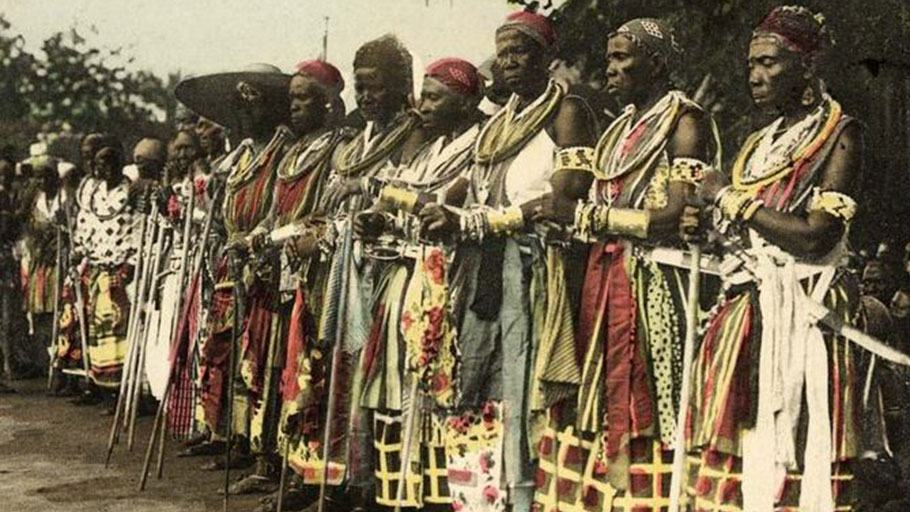
Fig. 4 — The celebrated female army of Dahomey was also known as the Amazons of King Béhanzin.
Cécile Fatima, the Manbo who presided over the Ceremony at Bwa Kayiman. Toussaint L’Ouverture’s lieutenant Sanité Belair who was the most reknown
female warrior, caught by the enemy she was to be decapitated and instead demanded to be shot like a soldier. She boldly stated, losing her life for liberty was the greatest honor that could be bestowed, see (fig.5). Other revered soldiers include: Marie Jeanne Lamartiniére. Lazare who led an insurrection against
Napoleon, and we know of the Nan (Princess) Améthyste who organized a company of woman warriors as part of the Sanpwèl (or Bizango) secret society. Catherine Flon, the designer of the Haitian Flag and goddaughter of Jean-Jacques Dessalines (fig. 6). Empress Marie-Claire Heureuse Félicité Bonheur (d. 1858),
the wife of Dessalines. Marie Sainte Dédée Bazile (Défille) who is the heroine who retrieved and buried the mutilated body of the Emperor Dessalines. Included in this illustrious grouping is also Queen Marie-Louise Coidavid (1778-1851), Henri Christophe’s wife.
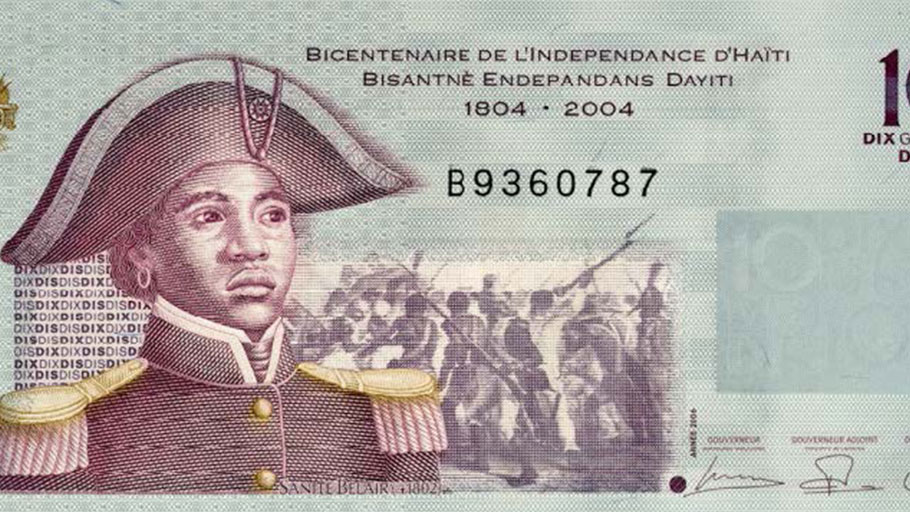
Fig. 5 — Image of revolutionary solider Sanité Bélair on a bicentennial 1804-2004 Haitian Gourde (monetary
unit).
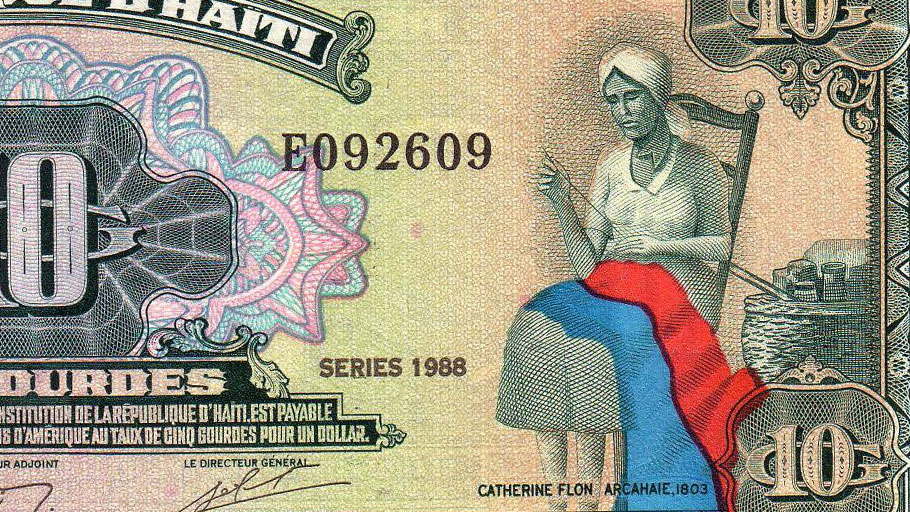
Fig. 6 — Image of Catherine Flon, Haitian flag designed and maker commemorated on a unit of 10 Gourdes.
Legend has it that on that night in the north of Haiti, the supreme Manbo Asogwe Cecil Fatima/Cecil Fatiman shared the asson (the instrument of authority in Haitian Vodou) with the maroon leader and Hougan (male priest) Dutty Boukman (? – 1791). Boukman was an African enslaved in Jamaica who was later deported to Saint Domingue cum Haiti (d. 7th November 1791.) Fatiman a high priestess, whose title translates as the, Determiner of Life and Death, Keeper of Medicinal Packets, the One Who Has Mastered the Power of the Word, became possessed by the Spirit of Ezuli Dantò. In the course of ceremony, a pig was sacrificed and a “blood pack” was made. The blood of a black pig was shared among the participants with an oath to kill all the whites on the island. [6 ] According to researcher, Marguerite Laurent, the KiKongo call of August 14, 1791 was (I have provided my own translations:)
E, e Mbomba, e e! Supreme Healer, Master of Breath,
Kanga Bafyòti [Protect and Deliver us the treacherous gangs]
Kanga Mundele [Protect and Deliver us from the hording strangers]
Kanga Ndòki [Protect and Deliver from wick ways]
Kanga Yo! [Protect us!]
But the prayer we know best from that night is:
Good Lord who hath made the sun that shines above us, that riseth from the sea, who maketh the storm to roar; and governeth the thunders. The Lord is hidden in the heavens, and there He watcheth over us. The Lord seeth what the blanc (whites) have done. Their god commandeth crimes, ours giveth blessings upon us. The Good Lord (Bondye) hath ordained vengeance. He will give strength to our arms and courage to our hearts. He shall sustain us. Cast down the image of the god of the blanc, because he maketh the tears to flow from our eye. Hearken unto Liberty that speaketh now in all you hearts (Heil).
In the days to come, the Haitian expression “Wòch kase wòch. Goud kase goud” fight fire with fire would be manifest with a fury that would last 13 years. Flames would decimate the Northern Plain. Thousands of whites would meet their maker through beheadings, strangulation, and torture. The means by which they tormented Africans in their short lives on the island was reciprocated in kind. [ 7 ] At the heart of the ethics of war are Ubuntu and the lack of selfishness. Power tied to selfishness is considered wicked and there was no more selfish or wicked an act than that of chattel slavery. What the Revolution subsequently bought was:
- 1804 Haitian Independence declared
- 1807 Britain abolishes slavery
- 1811 German Coast uprisings in New Orleans
- 1811 Spain abolishes slavery
- 1811-1813 Mexico abolishes slavery
- 1812 Aponte Revolt in Cuba
- 1821 Marcos Xiorro of Puerto Rico led a rebellion of enslaved persons
- 1827 Slavery formerly ends in New York
- 1833 Slavery Abolition Act (intended to end the Transatlantic Slave Trade)
- 1888 Slavery ends in Brazil
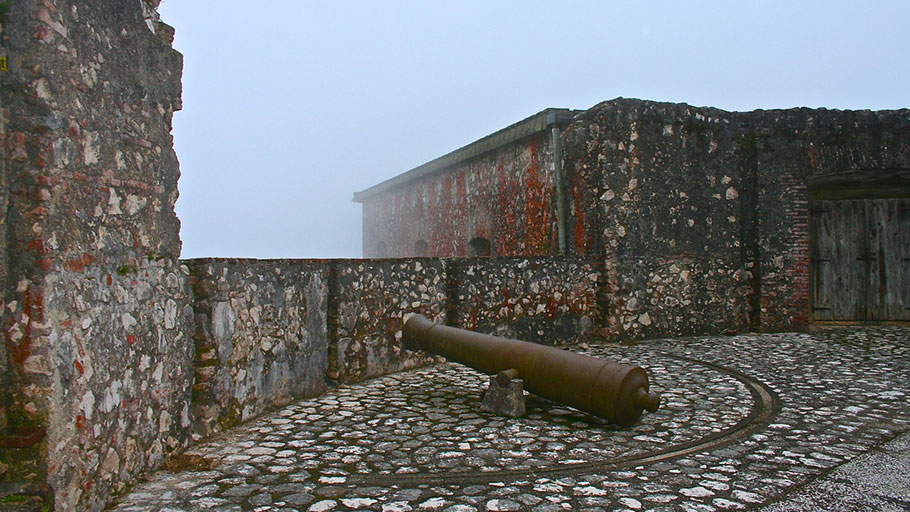
Fig. 7 — One of hundreds of canons at the La Citadel Laferrière in Haiti, built 1807-1823 by 23,000 Haitian men and women under the direction of Emperor Jean Jacques and supervision of General Henry Christophe. Photo-credit: Dowoti Désir. 2011
Leaders like Tula, Denmark Vesey, Nate Turner all took their orders and inspiration from Haiti. Their courage would go on to influence the likes of Tubman, Wells, Garvey, Lumumba, Malcolm X, Fannie Lou Hamer, Walter Rodney, Sankara, and others. 8The revolts that stemmed from the long succession of insurrections would culminate in the most powerful turn over of human injustice, the formation of the world’s first true Republic and the first Black Republic – Haiti. The Haitian Revolution would prove to be a powder keg that would lead to battle after battle within the Caribbean and North America— essentially a full-scale war however widespread, erratic, extended – one must soon realize that the Transatlantic Slave Trade in Captive Africans was actually a war. An extension of civil strife on the African continent compounded by the quest for global economic domination on the part of Europeans– is a position elaborated on and supported by scholar like John Thornton and Gerald Horn. Perhaps it should be renamed, the Transatlantic War of Enslaved Africans, as it was indeed the first world war reaching beyond anything ever known in human history with the excessive loss of human life and its unprecedented geographic scale.
Conclusion
Bwa Kayiman launched the Haitian Revolution… a revolution that would transform the world and bring an end to the biggest crime against humanity, the Transatlantic Slave Trade in Captive Africans. The liberation of Venezuela and most of Latin America, the bankruptcy of Napoleon, exponential expansion of the United States through the Louisiana Purchase are just some of the outcomes of the 226th commemoration (2017) of Bwa Kayiman. It is for this reason the United Nations recognizes the beginning of the human rights movement with this day, and the International Day for the Remembrance of the Slave Trade (August 23rd) is celebrated by member states. The foundation of the human rights conventions we uphold rests on the restoration of our dignity. That is what was delivered to us not only as African descendants but all of humanity at that auspicious ancestral gathering.
Ayigbogbo!
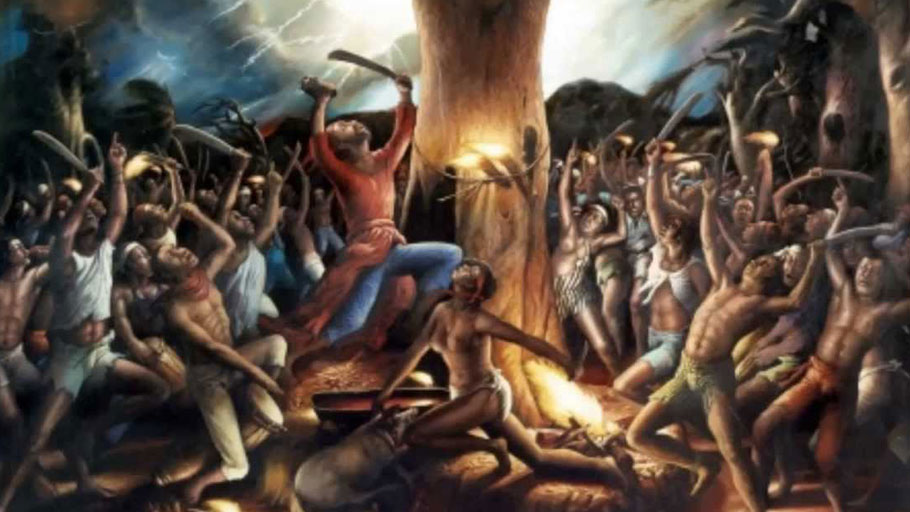
Fig. 8 — Painting depicting the events at Bwa Kayiman, artist unidentified
Notes:
- A contesting date of 24 August is also recognized among scholars
- See Dubois’ notes on Haitian women during the uprisings of San Domingue
- See: A Dictionary of African Christian Biography
- See Thornton, remarks about the impact of the early Kongolese civil wars on the political ideology of Africans in the
Americas, “I am the subject of the King of the Kongo” - The Amazons of Black Sparta are the female warriors who defended the Kingdom of Dahomey in the era of
internecine wars and continued to hold the guard during the battles against white European enslavers and colonizers. - The Bwa Kayiman Call, http://www.margueritelaurent.com/writings/bwakayiman.html#epistemology
- Ubuntu, the notion at, “I am because you are”…
- The French Revolution 1787 to 1799 and the American Revolution 1760 to 1791, were not in fact true revolutions of
liberation as Africans remained enslaved and women and non-landowning white males disenfranchised. The Haitian
Revolution defied the inequality sustained in these societies, as it pushed for the liberation of all African peoples
wherever they were found and sought an end to oppression for humanity.
References:
Brockman, Norbert C., A Dictionary of African Christian Biography, 1994
www.dacb.org/stories/congo/kimpa_vita.html
Désir, Dòwòti, Goud kase goud: Conjuring Memory in Spaces of the AfroAtlantic
Gran Bwa Press New York 2014
DuBois, Laurent, Avengers of the New World: The History of the Haitian Revolution
Harvard University Press, Cambridge 2005
Laurent, Marguerite, “Black Woman: Mother of All Races”
www.margueritelaurent.com/writings/motherofallraces.html#Ezili_Isis
Thornton, John K., “I am the Subject of the King of the King of the Congo: African Political Ideology and the Haitian Revolution” 1993
Wargaming Warrior Women Combatants in the Haitian Revolutions
www.wargamingraft.wordpress.com/2015/07/31/women-combatants-in-the-haitianrevolution/’
Images
Photographs:
- Dòwòti Désir
- Alex Proimos
Painting: Boukman Dutty
The Enslaved Behind the Armed Revolts and Marronage
www.nickybuggle.wordpress.com/armed-revolts-2/bussa/
Kimpa Vita
The Black saint and Prophetess of Kongo: Kimpa Vita
September 2012
www.kwekudee-tripdownmemorylane.blogspot.com/2012/09/the-black-saint-and-prophetessof-kongo.html
Queen Njinga
Dynamic Africa
www.dynamicafrica.tumblr.com/post/71895338544/best-posts-of-2013-39-queen-nzinga-mbanda
Post Card of Beninoise Female Warriors
www.solarey.net/dahomey-amazon-women-benin-west-africa/
Painting: Bois Caiman, Un-silencing the Haitian Revolution
www.history.cass.anu.edu.au/event/school-history-seminar-series-2012-unsilencing-haitianrevolution

